A Simple Skincare Routine for Combination Skin Types
August 27, 2024
Try This 5-Step Skincare Routine for Combination Skin
Your skincare routine doesn’t have to be complicated to be effective. Here, find a simple five-step skincare routine perfect for balancing combo skin.
1. Wash with a cleanser for combination skin
When you have combination skin, it’s important not to use a cleanser that’s too harsh—otherwise, you can risk stripping the drier areas of your face. At the same time, you don’t want to use anything too heavy or rich. Follow the American Academy of Dermatology’s (AAD) recommendation and use a mild cleanser, such as the classic Kiehl’s Ultra Facial Cleanser. The gentle formula—meant for all skin types—thoroughly cleanses without over-drying the skin. If you’re wearing makeup, remove it first with a mild cleansing balm, like the Youth to the People Superberry Dream Cleansing Balm, which feels hydrating on the skin—not greasy.
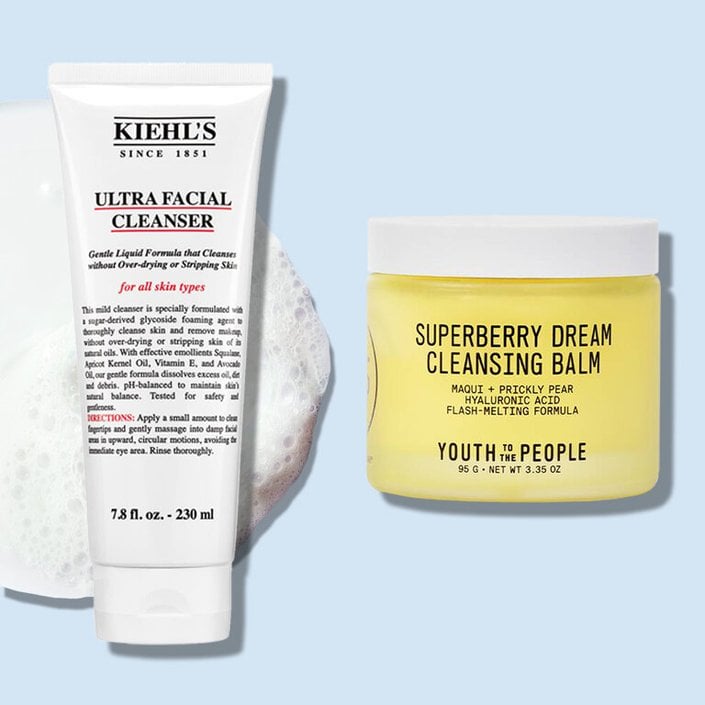
2. Use an exfoliating toner
It can be tricky to find an exfoliator (and an exfoliating schedule) that works for you—and that’s without factoring in the nuances of combination skin. When you have both dry and oily areas, you have to be extra attentive in picking an exfoliant that won’t leave your drier areas feeling tight or stripped. Mild chemical exfoliants, such as glycolic acid, are ideal, as they tend to be gentler than physical exfoliants like scrubs. Try the L’Oréal Paris RevitaLift Derm Intensives 5% Glycolic Acid Peeling Toner, which is alcohol-free, suitable for all skin types, and gentle enough for daily use.
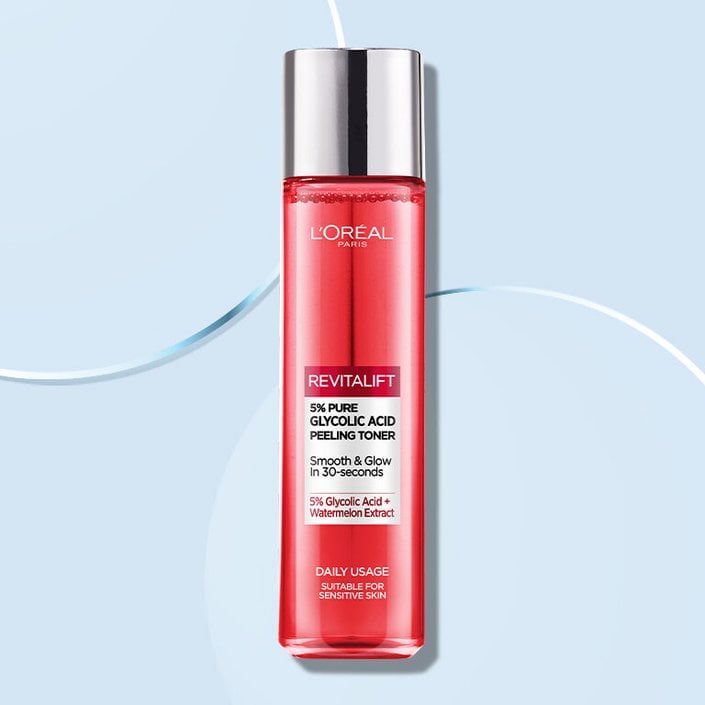
3. Apply a serum for your skin concerns
Serum is an essential step in any skincare regimen, as these targeted treatments can help address specific skin concerns to help promote a healthier-looking (and -feeling) complexion. And because they tend to be lightweight, they layer well with other skincare products for combination skin without adding excess weight.
In the morning, we suggest reaching for a vitamin C serum, such as the cult-classic SkinCeuticals C E Ferulic Serum. The potent formula helps improve the appearance of both skin texture and tone, visibly minimizes fine lines and wrinkles, and helps promote a brighter-looking complexion. In the evening, use a gentle retinol serum, like the CeraVe Skin Renewing Retinol Serum, to help resurface your skin. We love this pick because it’s gentle but effective—and because it helps support the skin’s ever-important moisture barrier.
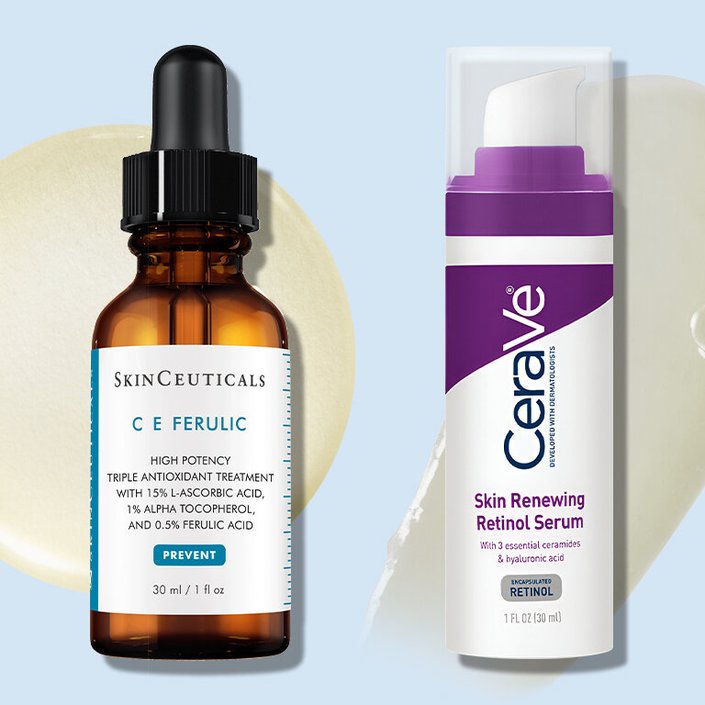
4. Layer on a medium-weight moisturizer
Moisturizer is often one of the tricker products to settle on for combination skin types. You don’t want to use anything too heavy and leave your T-zone looking slick, but a lightweight lotion may not provide enough moisture to balance out those drier areas. In our experience, water-based moisturizers that contain humectant ingredients like hyaluronic acid are the way to go. Try the Vichy Minéral 89 48H Moisture Matte Sorbet. The unique formula boasts a lightweight gel texture and provides up to 48 hours of hydration without leaving the skin feeling weighed down. It even helps mattify shine—a serious boon for those prone to T-zone shine.
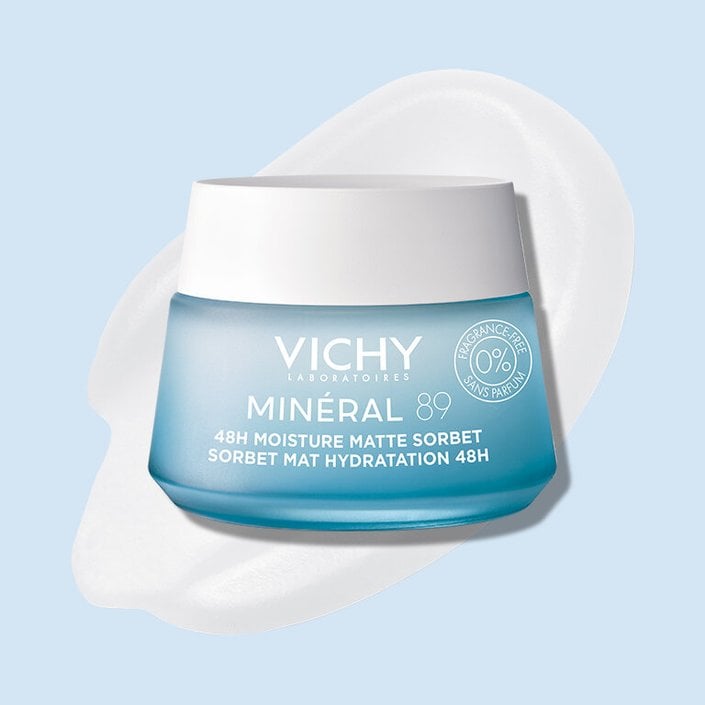
5. Apply sunscreen
Here’s your regularly scheduled reminder that sunscreen is always a must. No matter your skin type (or the time of year!), this is one step you really shouldn’t skip. The United States Drug and Food Administration (FDA) advises using a broad-spectrum formula with an SPF of at least 15 every day, rain, shine, or snow. The La Roche-Posay Anthelios UV Hydra Hydrating Face Sunscreen SPF 50 fits the bill—plus it feels incredibly lightweight on the skin.
Be sure to also remember to follow other sun safety measures—like avoiding direct sunlight at midday—to help keep your skin protected from damaging UV rays.
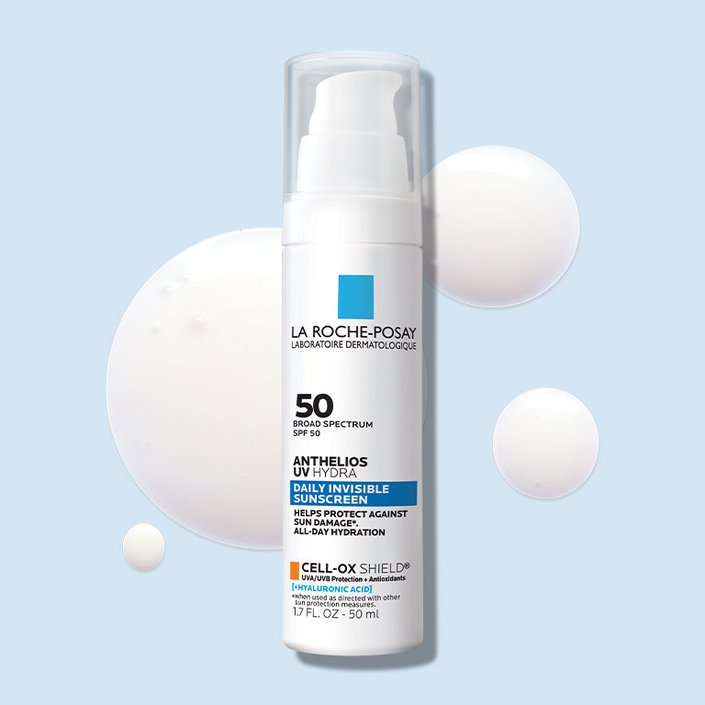
5 Skincare Tips for Combination Skin
The above routine for combination skin is just a guideline—to keep your skin looking and feeling its best, there are some additional things you may want to keep in mind. Here are five tips to help keep your skin feeling balanced and looking healthy.
- Use spot treatments to target individual blemishes: Those with combination skin may experience breakouts in oilier areas, like the forehead or chin. To help target unwelcome visitors without drying out your skin, reach for a spot treatment, like the Kiehl’s Truly Targeted Acne-Clearing Pimple Patch with Salicylic Acid. The innovative treatment helps shield blemishes from external stressors (and pop-happy fingers) and helps diminish pimple size and redness in as little as 24 hours.
- Carry blotting papers: If your T-zone frequently takes on a slick appearance around mid-day, blotting sheets will be your friend. These paper-thin sheets help absorb excess oil and mattify the skin, and they’re easy to toss in your bag before heading out the door.
- Nourish dry areas with a hydrating mask: Certain factors, like exposure to cold, dry air, can exacerbate dryness. When you feel your skin could use a bit of additional moisture, reach for a nourishing face mask to help boost hydration and plump your skin. Try the Youth to the People Superberry Hydrate + Glow Dream Mask, which you can apply to drier areas as the final step in your nighttime skincare routine.
- Take cooler showers: Hot water can strip your skin of essential moisture and make dryness worse, per the AAD. Set your water temp to warm rather than scorching, and try to limit the amount of time you spend luxuriating in the shower.
- Consider adjusting your routine seasonally: Those with combination skin often find that their dryness gets a bit worse during the colder months. If you can relate, consider adding a hyaluronic acid serum to your daytime and nighttime skincare routines to help boost hydration and stave off dryness. We’re fond of the Vichy Minéral 89 Hyaluronic Acid Serum, which is lightweight, fast-absorbing, and suitable for all skin types.
Next Up: How To Double Cleanse Correctly, According To Dermatologists
Read more
EXPLORE BY TOPICS AND BRANDS
- skin-type
- Combination Skin
- video-embed
- Embedded Video
- Garnier
- La Roche-Posay




























